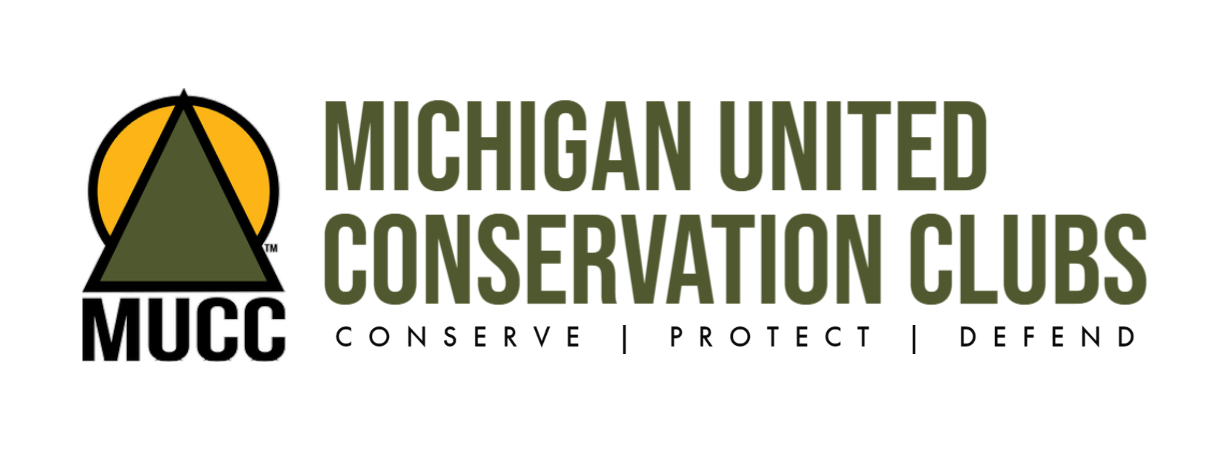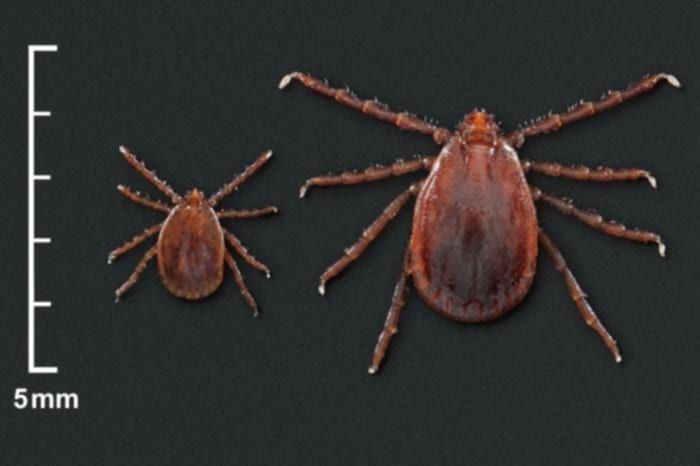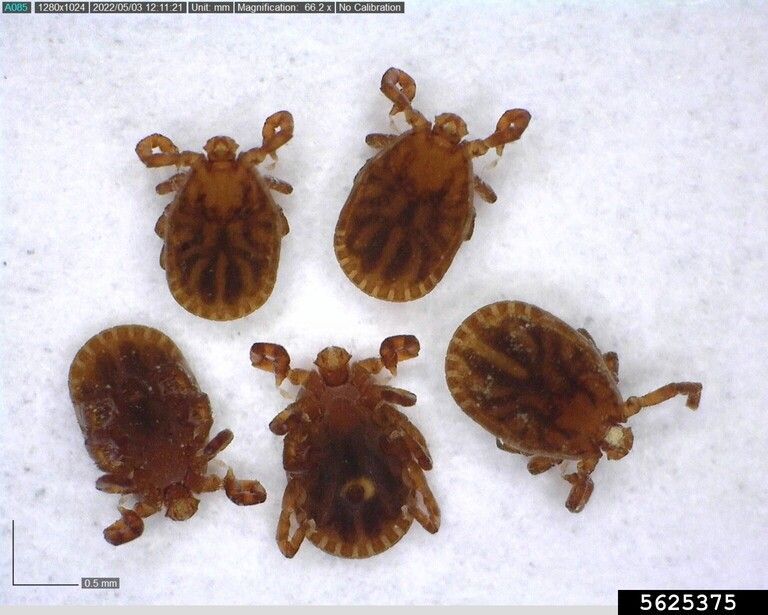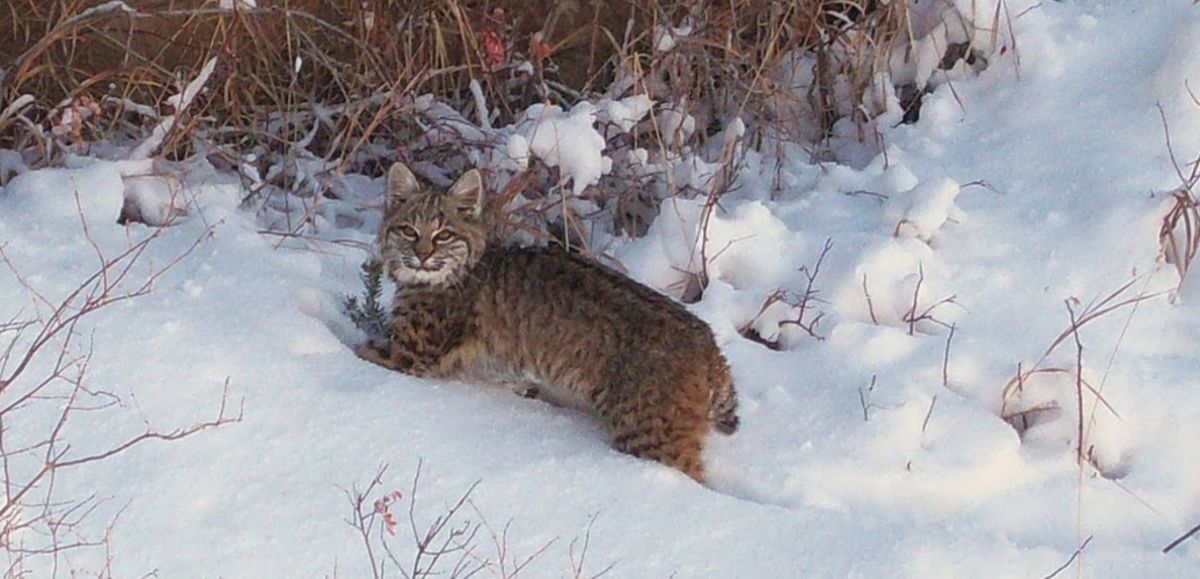The Asian longhorned tick is recognized by the Michigan DNR to transmit diseases such as Rocky Mountain spotted fever, Heartland virus, Powassan virus, and Theileria orientalis. Diseases transmitted by ticks can be harmful to humans, pets, livestock, and wildlife alike. However, ticks do not immediately begin transmitting diseases to hosts as soon as they hatch into the larval or nymphal stage. Instead, ticks must latch onto an infected host in which the disease is transmitted to the tick and can then be transferred to future hosts. The length of time a tick is attached increases the potential for disease transmission to the host.
To help avoid issues with ticks, it is important to perform regular and thorough tick checks for people and animals. Once a tick is found, it should be removed immediately and safely according to the Michigan Department of Health and Human Services Tick Bite Prevention page. Ticks removed from animals can be submitted to the MSU Veterinary Diagnostic Laboratory (VDL) for identification and pathogen testing. Other ticks can be sent for identification to the Michigan Department of Health and Human Services via email (MDHHS-Bugs@michigan.gov) or mail.
Photo above: Asian longhorned tick adults courtesy of Ansel Oommen, Bugwood.org.
The recommended forms of control for the longhorn tick include habitat modifications and maintenance. Creating an environment less suitable for ticks is the simplest prevention method, although it often requires repeated maintenance. Property maintenance, such as mowing and removing brush or litter, can help limit the number of spots where ticks can be found. Wearing light colored, long clothes tucked in can also aid in the detection of ticks early on. No acaricide resistance has been found in the established populations of the longhorn tick, according to USDA APHIS. Organophosphates, amidines, and synthetic pyrethroids can be an effective form of control and play a role in safety.





